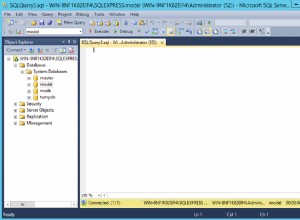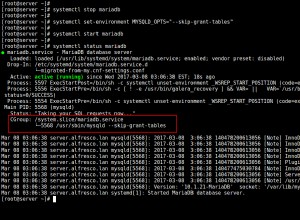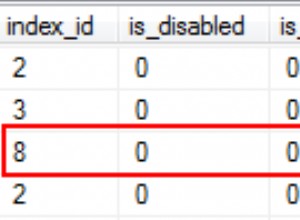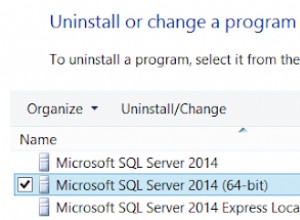Ci sono due soluzioni a questo problema:
- Nella finestra delle proprietà per la colonna nel designer EDMX, cambia il
StoreGeneratedPatternnelPERIODcolonne (ValidFrom e ValidTo nel mio caso) devono essereidentity. L'identità è migliore di quella calcolata poiché calcolata farà in modo che EF aggiorni i valori su un Inserisci e Aggiorna invece di un semplice inserimento conidentity - Crea un
IDbCommandTreeInterceptorimplementazione per rimuovere le colonne del periodo. Questa è la mia soluzione preferita poiché non richiede lavoro aggiuntivo quando si aggiungono nuove tabelle al modello.
Ecco la mia implementazione:
using System.Data.Entity.Infrastructure.Interception;
using System.Data.Entity.Core.Common.CommandTrees;
using System.Data.Entity.Core.Metadata.Edm;
using System.Collections.ObjectModel;
internal class TemporalTableCommandTreeInterceptor : IDbCommandTreeInterceptor
{
private static readonly List<string> _namesToIgnore = new List<string> { "ValidFrom", "ValidTo" };
public void TreeCreated(DbCommandTreeInterceptionContext interceptionContext)
{
if (interceptionContext.OriginalResult.DataSpace == DataSpace.SSpace)
{
var insertCommand = interceptionContext.Result as DbInsertCommandTree;
if (insertCommand != null)
{
var newSetClauses = GenerateSetClauses(insertCommand.SetClauses);
var newCommand = new DbInsertCommandTree(
insertCommand.MetadataWorkspace,
insertCommand.DataSpace,
insertCommand.Target,
newSetClauses,
insertCommand.Returning);
interceptionContext.Result = newCommand;
}
var updateCommand = interceptionContext.Result as DbUpdateCommandTree;
if (updateCommand != null)
{
var newSetClauses = GenerateSetClauses(updateCommand.SetClauses);
var newCommand = new DbUpdateCommandTree(
updateCommand.MetadataWorkspace,
updateCommand.DataSpace,
updateCommand.Target,
updateCommand.Predicate,
newSetClauses,
updateCommand.Returning);
interceptionContext.Result = newCommand;
}
}
}
private static ReadOnlyCollection<DbModificationClause> GenerateSetClauses(IList<DbModificationClause> modificationClauses)
{
var props = new List<DbModificationClause>(modificationClauses);
props = props.Where(_ => !_namesToIgnore.Contains((((_ as DbSetClause)?.Property as DbPropertyExpression)?.Property as EdmProperty)?.Name)).ToList();
var newSetClauses = new ReadOnlyCollection<DbModificationClause>(props);
return newSetClauses;
}
}
Registra questo interceptor con EF eseguendo quanto segue in qualsiasi punto del codice prima di utilizzare il contesto:
DbInterception.Add(new TemporalTableCommandTreeInterceptor());




